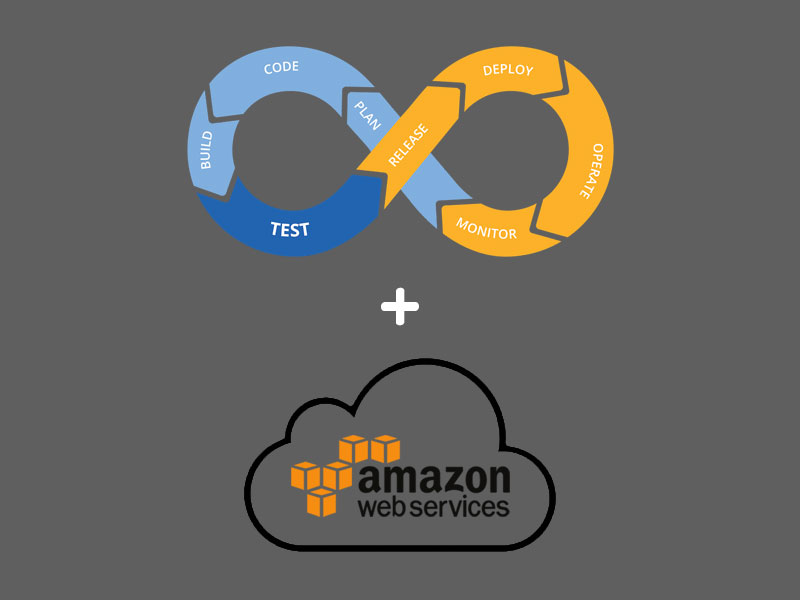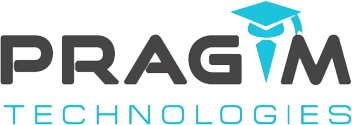Best AWS training in Bangalore | DevOps with AWS training

Our AWS DevOps trainer has trained hundreds of students. Attend our free DevOps training classes to get to know the quality of our training first hand. In his spare time, he also does free online training videos and I have included the links below.
DevOps Tutorial for Beginners
Part 1 - What is DevOps
Understand what DevOps is and various DevOps Tools and their usage with real-time examples. Going forward we'll also be doing a hands-on on various DevOps tools and work with them on AWS cloud.
Part 2 - DevOps deep dive and importance in agile development methodology
In this video we will discuss the following
- Understand DevOps in detail.
- What is waterfall development methodology.
- What is agile development methodology.
- Importance of devops.
- Future of devops.
- Devops job opportunities
Part 3 - Who can become devops engineer
In this video we will discuss
- Who can learn DevOps and become a DevOps engineer.
- What are the pre-requisites to learn DevOps
- What skills are required for DevOps engineer
- Tools required for DevOps engineer
Part 4 - Git and GitHub Introduction
Understand, what are source code management and version controlling systems. Introduction to Git and GitHub. Along the way, we will learn how to create a GitHub account.
Part 5 - Configuring git on windows, understanding git clone, pull, private and public repositories
- How to configure git on windows.
- What are git clone and pull commands and how to use them.
- What are public and private repositories.
- How to create public and private repositories and their differences.
DevOps with AWS Training - Classroom Course Content
DevOps Introduction:
- 1 Understanding Development.
- 2 Development SDLC: Water Fall VS Agile.
- 3 What is DevOps.
- 4 DevOps SDLC.
- 5 DevOps tools for DevOps SDLC.
- 6 DevOps Roles & Responsibilities.
Linux commands
Shell scripting
- 1 Basic Programming using Shell scripting
- 2 Creating Functions and its advantages.
- 3 Working with If, if else, for loop, while loop and Switch cases.
Version Controlling & Source Code Management (VCS & SCM):
- 1. Introduction to VCS and SCM.
- 2. Overview of Git and GitHub.
- 3. Installing Git on Windows and Linux.
- 4. Creating branches in Git.
- 5. Understanding real-time branching strategies.
- 6. Creating Public and Private Repositories.
- 7. Pushing (committing) code to GitHub.
- 8. Pulling (checkout) code from GitHub and doing Password less authentication.
- 9. Merging Code with different branches and how to review code while merging.
- 10. Realtime common git issues and how to resolve those.
- 11. Working with Tagging, Git Stash, Rebase and Cherry Pick.
Build tools:
- Ant:
- 1. Basic discussion about Ant projects.
- 2. 1 Sample with Ant Project.
- Maven:
- 1. Introduction to Maven and differences between Ant and Maven.
- 2. Configuring Maven on Windows and Linux.
- 3. Introduction to Maven Life cycle and Working with Maven for Java projects.
- 4. Different types of Maven repositories and Profiling with Maven.
Application Servers:
- Tomcat and JBoss/Wildfly:
- 1. Overview of Application Servers.
- 2. Difference between Application and Web Servers.
- 3. Deploying Java projects to Application Servers.
- 4. Application server Admin console usage.
- 5. Installing Tomcat on Windows and Linux and working with it.
Continuous Integration tool (Jenkins):
- 1. Overview of Continuous Integration and the need for it.
- 2. Setting and Starting Jenkins. Different ways to configure Jenkins.
- 3. Creating Freestyle, Maven style, Pipeline, Multi pipeline style Jobs.
- 4. Configuring Different tools like Java, Git, Maven, SonarQube, Tomcat etc to Jenkins.
- 5. Adding and working with different kinds of Jenkins Plugins.
- 6. Creating fully automated jobs to pull code from GIT, build using Maven, check Code quality using SonarQube,
take backup in Nexus and deploy to Tomcat. - 7. Creating Jenkins Pipeline and Multi branch pipeline jobs (Using Groovy script).
- 8. Working with real-time branching strategies.
- 9. Configuring Jenkins Master-Slave and working with them effectively.
- 10. What is Continuous Integration, Continuous Delivery and Continuous Deployment.
- 11. Different ways to trigger builds and what is Labels and how to work with labels.
- 12. Parallel execution of Jobs.
- 13. Creating Jobs for Dev, QA, UAT and Prod environments.
- 14. SMTP configuration and Sending alert messages from Jenkins.
- 15. User access and Authentication strategies to Jenkins
Code Quality analysis tool:
- SonarQube/Sonar Scanner:
- 1. Introduction to SonarQube and its Architecture.
- 2. Installation of SonarQube and Scanner on Windows and Linux.
- 3. Configuring with free style and Maven style of Projects.
- 4. Integrating with Jenkins for Freestyle and Maven style of Projects.
- 4. Integrating with Jenkins for Freestyle and Maven style of Projects.
- 5. Working with dashboard and creating Custom Quality Gate ways.
External artifact Repositories:
- Nexus:
- 1. Introduction to Nexus.
- 2. Configuring on Windows and Linux.
- 3. SMTP configuration in Nexus and Creating users.
- 4. Creating Snapshot, Release and Group repositories.
- 5. Configuring Nexus with Maven.
Application monitoring tool:
- New Relic:
- 1 Registering in NewRelic.
- 2. Creating Monitor job and configuring applications.
- 3. Configuring SMTP and emails to send email alerts.
Infrastructure Monitoring tool:
- Nagios:
- 1. Introduction to Nagios and need of monitoring.
- 2. Installing Nagios on Linux.
- 3. Nagios Architecture and different Nagios configuration files.
- 4. Server Monitoring and report generation and notifications.
- 5. Nagios Plugins and creating plugins.
Containerization tools:
- Docker:
- 1. Virtualization VS Containerization.
- 2. What is Docker, Docker Hub and Docker benefits.
- 3. Understanding Docker components, Architecture and Life cycle.
- 4. Installing Docker on Linux (AWS cloud).
- 5. Deep dive about Docker image and Containers.
- 6. Working with most of Docker commands.
- 7. Running multiple containers and Docker compose.
- 8. Docker key words, creating custom images, running, building and pushing to Docker Hub.
- 9. What are microservices, use of docker with microservices and creating a real-time custom image and
working with it. - 10. Building Docker images and pushing those to Docker Hub public repository and private repository on
AWS. - 11. Docker volumes, linking containers and exposing ports.
- 12. Integrating Docker with Jenkins and automating.
- 13. Docker Networking and basics of Docker Swarm.
Kubernetes:
- 1. Introduction to container Orchestration.
- 2. Overview of Kubernetes and setup on Linux (AWS cloud).
- 3. Understanding Kubernetes components and what is clustering.
- 4. Introduction to YAML and Json formats.
- 5. Creating Pods, Replication Controller, Service and Deployments.
- 6. POD life cycle, Load balancing and Scaling of PODS and working with Labels and its importance.
- 7. Rolling updates and Rolling back of Deployments.
Configuration management:
- Ansible:
- 1. Introduction to Ansible and its architecture.
- 2. Benefits of Ansible over Chef and Puppet.
- 3. Installation on Linux.
- 4. Understanding and working with Ansible Modules, Inventories.
- 5. Playbooks, Hosts, Hosts groups, Variables, Facts, Configuration files, Roles and Vaults.
- 6. Introduction to Ansible Tower.
Ticketing tool:
- JIRA:
- 1. Understanding Sprints, Sprint planning, Epics, Backlogs, Stories, Tasks.
- 2 Creating stories, tasks and working with those.
AWS Topics:
- Complete VPC Topics:
- 1. What is VPC and its basics.
- 2. What is Routing, Internet gateway, NACL (Network Access Control List), Subnet, Availability zones and
creating and working with them. - 3. What is Route Tables, Creating Internet Gateways and attaching to VPC.
- 4. What is NACL, what are inbound and outbound rules.
- 5. VPC peering and working with it.
- EC2 and Security groups:
- 1. What is EC2, basics of EC2 and its benefits.
- 2. Working with EC2 and creating AMI and connecting to them.
- 3. Different purchase options if EC2.
- 4. Pricing overview and we are charged in AWS.
- 5. Different instance types in EC2.
- 6. Different EC2 storage volumes like EBS and EFS and working with them.
- 7. Creating EBS and types of EBS.
- 8. Creating volumes and attaching them to AWS instances.
- 9. Creating snapshots and working with those.
- 10. AWS CLI for EC2.
- 11. EC2 Bootstrap.
- 12. Creating our own AMIS.
- 13. Creating and working with Auto-scaling, load balancer, launching, creating Alarm, monitoring, cloud
watch. - 14. Creating our own domain and working with Route53.
- S3(Simple Storage Service):
- 1. S3 basics and its Components and structure.
- 2. Creating and working with S3 Buckets, Folders and Objects and their permissions.
- 3. Pricing in S3 and working with different Storage classes (Standard, Reduced Redundancy Storage,
Infrequent Access, Glacier) and Objects life cycle, changing storage classes. - 4. S3 permissions, Versioning and data encryption in S3.
- 5. What is AWS CLI, installing and working with S3 CLI.
- 6. Copying and Syncing objects between S3 buckets.
- 7. Static website hosting in S3.
- IAM (Identity and Access Management):
- 1. What is IAM and IAM Password policies.
- 2. IAM Configuration and different roles in IAM.
- 3. Multi Factor Authentication (MFA) in IAM.
- 4. Creating users, groups and assigning permissions.
- Code Commit and Code Pipeline:
- 1. What is code commit, code pipeline, setup, configuring and working with it and its pricing.
- AWS CLI:
- 1. Working with AWS CLI.
Realtime tools:
- 1. WinScp, FileZilla, Slack, JIRA
- 2. Mailing tools
- 3. Communication tools
- 4. Agile Scrum methodology
- 5. All real-time scenarios
NOTE: All the practice will be done on AWS cloud and will provide material for all the above
specified DevOps tools with model interview questions.
Will help in interview preparation and share interview questions.
100 % job assistance will be given.
